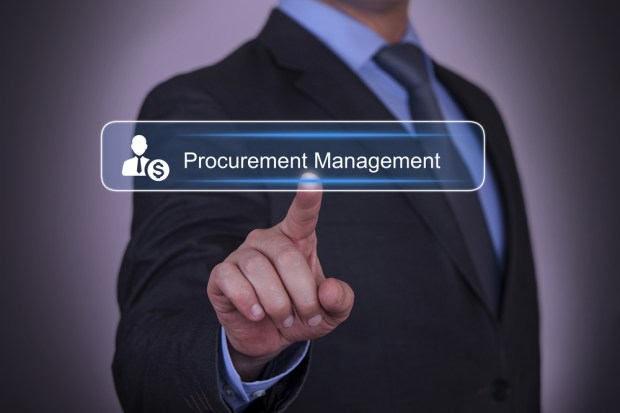How The Role Of CPO Got Flipped On Its Head

Any buying organization wants the same things from its procure-to-pay solution: visibility into spend and the supply chain, supplier risk management and an overall way to save money. Historically, procurement has always been about the bottom line.
But businesses are beginning to realize that the procurement process can now be a proactive — not just retroactive — piece of business operations.
Just ask source-to-pay firm Zycus. The company just signed its latest client, a major food manufacturing company; Zycus Vice President of Corporate Development Richard Waugh recently spoke with PYMNTS about the particular needs of a buy-side organization in this industry. With companies demanding more customized and holistic procurement tools that meet their unique requirements, there’s no doubt that source-to-pay is now a leading business strategy and not just an afterthought.
“We have customers across virtually every vertical market,” Waugh said. “When you look at a business process like source-to-pay, to a certain extent, that’s a standard business process, whether you’re a food manufacturer, a bank, a high-tech company, an educational institution — there is some commonality.”
For Zycus’ newest customer, there are, of course, certain demands that any corporation would want from a source-to-pay solution.
As with any industry, for example, “cash is king,” Waugh said.
“Really, the focus is on accelerating the whole payment cycle,” he explained. “Things like eInvoice automation — how do I take what, in many businesses today, is still a highly manual, paper-bound process and accelerate that?”
That acceleration can largely come through automated services, like automated data capture and three-way matching — the process by which a buyer matches what was ordered, to what it was billed for, to what was actually received from a supplier.
It can also come from programs like dynamic discounting, which encourages buyers to speed up their payment times in order to secure a discount from the supplier.
Naturally, the latter end of the source-to-pay cycle, the actual payment, will be all about speed, efficiency and cost-effectiveness for any buying organization.
But Zycus’ food and beverage industry customers, Waugh explained, also have their own particular requirements for procurement processes.
The executive pointed to particularly stringent regulations around the food and beverage sector that weigh heavily on how these businesses source suppliers and manage supply chains.
“That takes on a special significance in that industry,” he explained. “You really need to have visibility throughout your supply chain and be able to document and certify the handling of those ingredients that ultimately wind up in the food supply.”
Food manufacturing buyers often also have a heightened reliance on speed, Waugh added, explaining that procurement officials will want to develop their supplier contracts to ensure that perishable commodities are delivered on time, whether that be through a 24-hour fulfillment agreement or something else.
Price fluctuations and other types of market volatilities can also hit the food and beverage sector hard. If a particular commodity has a bad season or if weather patterns are pushing prices up, a source-to-pay solution will need to take a proactive position in helping buyers manage this risk.
Waugh pointed to another client in this sector with this need. “This customer is using a feature of spend analytics that’s called iCost to be more predictive and agile in how to react to market fluctuations,” he said. “It allows them to not just look at what they’ve purchased historically but to track up-to-date commodity price indices — for example, for underlying feed stocks, even things like packaging — to be able to manage, more effectively, that volatility.”
This ability for a source-to-pay tool to adjust to unique market needs signals a new era of procurement as a business function, according to Waugh.
“Within that domain of spend analytics, traditionally, that’s taken a historical view of what you’re buying and what you’ve bought in the past and how to leverage that through negotiations to get volume purchase discounts and things like that,” he said.
Today, however, with procurement solutions able to mold to certain industries, the capabilities of source-to-pay tools are growing, and the role of source-to-pay is increasing in prominence.
“Every business can benefit from increased visibility across source-to-pay, from full process automation and integration — that’s universal,” Waugh noted. “But then it becomes about certain nuances and industries that have particular ways they need to utilize that source-to-pay platform.”
In yet another example, he highlighted another food manufacturing client that has been outsourcing some manufacturing processes. In this case, Waugh said, procurement takes “an absolutely leadership position,” playing a key role in partner sourcing, risk mitigation and onboarding.
“The interesting twist there is that procurement has always, historically, focused on cost management,” he said. “Of course, that’s always going to be a focus, but when you’re doing more outsourcing to third-party suppliers, procurement becomes a part of top-line revenue generation, as well as managing the bottom line from a cost standpoint.”
The climb of procurement professionals up the strategic ladder of business operations is also seen across verticals. According to Waugh, the market today is in a “new era for procurement.”
“Procurement becomes the purveyor of critical business information across all of the different functions and, as such, is kind of the conduit for strategic business information across the organization,” the executive said. “It’s a much more proactive and strategic role than what we may have viewed historically about procurement being a little more reactive and brought in at the last minute.”
That tradition has now been flipped on its head. “Procurement is now driving the business strategy,” Waugh said.
